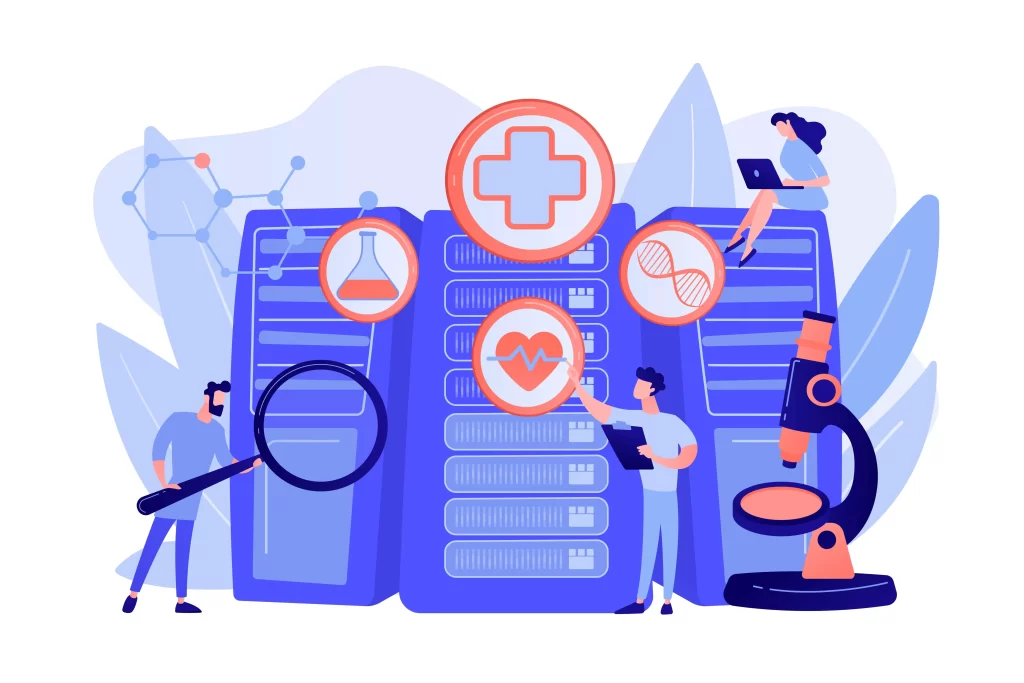- blog22
Intellectual Property Rights for Medical Sector: Safeguarding Innovation

The medical sector thrives on innovation, research, and the development of new technologies that improve healthcare infrastructure. Safeguarding these innovations is critical to ensure that companies and individuals are rewarded for their investments. Intellectual property (IP) is a powerful safeguard for these medical advancements. We will understand the role of intellectual property rights (IPR) in the medical industry, the impact on innovation, and why Dibs is an essential tool for creators in the medical and creative sectors.
What is Intellectual Property in the Medical Field?
Intellectual property (IP) in the medical field includes various inventions, innovations, and creative works related to healthcare and medicine. This can involve medical devices, pharmaceuticals, biotechnology products, procedures, research data, and healthcare software. Intellectual property rights (IPR) aim to provide legal protection to the creators and innovators, ensuring they have the exclusive right to use, sell, or license their inventions.
The most popular intellectual property rights in healthcare are patents, trademarks, and copyrights. Each serves a different purpose:
- Patents protect inventions, such as new drugs or medical devices.
- Trademarks safeguard the branding of products and services, such as the names of medical companies or specific drugs.
- Copyrights cover original works of authorship, like medical research papers, software, or educational materials.
Importance of IPR in the Medical Industry
Intellectual property rights are critical to the medical industry for several reasons.
- Encouraging Innovation:
The medical industry relies on constant innovation to discover new treatments and improve patient care. Protecting intellectual property through patents ensures institutions can yield on the costs associated with research and development (R&D). It also motivates individuals and businesses to invest time and resources in innovation, knowing their work will be protected. - Economic Growth:
Intellectual property rights in the healthcare sector promote economic growth by allowing businesses to capitalize on their inventions. Companies can license their intellectual property to others, generating revenue and creating jobs. IP protection helps maintain a competitive edge and prevents the loss of profits due to unauthorized use or imitation. - Protecting Patient Safety:
Intellectual property in the pharmaceutical industry plays a crucial role in ensuring that only authorized and tested products reach the market. For example, patents protect the formulation of life-saving drugs, preventing counterfeit products from being sold, which could jeopardize patient safety. - Global Competitiveness:
In the globalized world, intellectual property rights in healthcare allow nations to participate in international markets. Countries with strong IPR laws are often leaders in medical research and development, as companies and investors feel more secure about their investments.
Impact of Intellectual Property on Innovation in the Medical Industry
Intellectual property (IP) in healthcare profoundly impacts driving innovation. It serves as a protective shield and an economic engine for the medical sector. Let’s examine how:
- Fostering Research and Development (R&D):
Intellectual property rights incentivize medical companies to invest in R&D. Developing new drugs, medical devices, or biotechnology products requires significant time and resources. Without patent protection, competitors could easily replicate these innovations, dissuading companies from making high-risk investments. - Promoting Collaboration:
Intellectual property in the pharmaceutical industry or healthcare often enables collaboration between companies, research institutions, and universities. When IP rights are clearly defined and protected, parties are likelier to share knowledge and expertise, leading to breakthroughs in areas such as gene therapy, vaccine development, or artificial intelligence in healthcare. - Access to Funding and Investment:
Investors are more willing to fund startups or projects with strong intellectual property portfolios. A patent portfolio or other forms of intellectual property rights serve as assets that can attract venture capital or partnerships. This is especially critical in the pharmaceutical and biotech industries, where the cost of bringing a new drug to market can exceed billions of dollars. - Exclusive Market Control:
Intellectual property in the pharmaceutical industry grants the right to market exclusivity. This exclusivity period allows companies to recoup their investment, offering a window of time to set prices without fearing competition from generics. Although this can lead to high initial prices, it is a vital part of the business model that drives pharmaceutical innovation.
The Role of Dibs in Protecting Creative Work
While intellectual property rights in healthcare play an essential role, protecting one’s work—whether in the medical field or the broader creative landscape—can be complex. Here is where Dibs comes into play. Dibs simplifies asserting ownership over creative work, allowing inventors, authors, and designers to focus on what they do best—creating.
Why Choose Dibs?
- Immediate Protection:
Unlike the lengthy process of filing patents or trademarks, Dibs offers creators an immediate way to claim their intellectual property. This is especially useful in fast-paced fields like healthcare, where time is of the essence. - Cost-Effective:
Filing for patents, trademarks, or copyrights can be expensive. Dibs provides an affordable alternative, giving creators peace of mind without the financial burden. - Simplicity:
In the medical field and other industries, protecting intellectual property rights frequently requires navigating intricate legal systems. Dibs simplifies the procedure so that authors can quickly and easily protect their intellectual property.
By securing a Dibs certificate, creators in the medical industry—and any industry—can confidently assert their rights over their work without getting bogged down by the bureaucratic process.
Summing up
Intellectual property rights are crucial to the progress and success of the medical domain. They safeguard the innovations that elevate the healthcare system. They also stimulate economic growth, and drive further research and development. However, navigating the complexities of IP in healthcare and beyond can be challenging, especially for creators focused on innovation. This is where Dibs provides a practical and immediate solution, allowing inventors and creators to assert their rights efficiently.
By calling Dibs, creators can stay focused on their work, knowing that their intellectual property is protected from the moment of creation.
